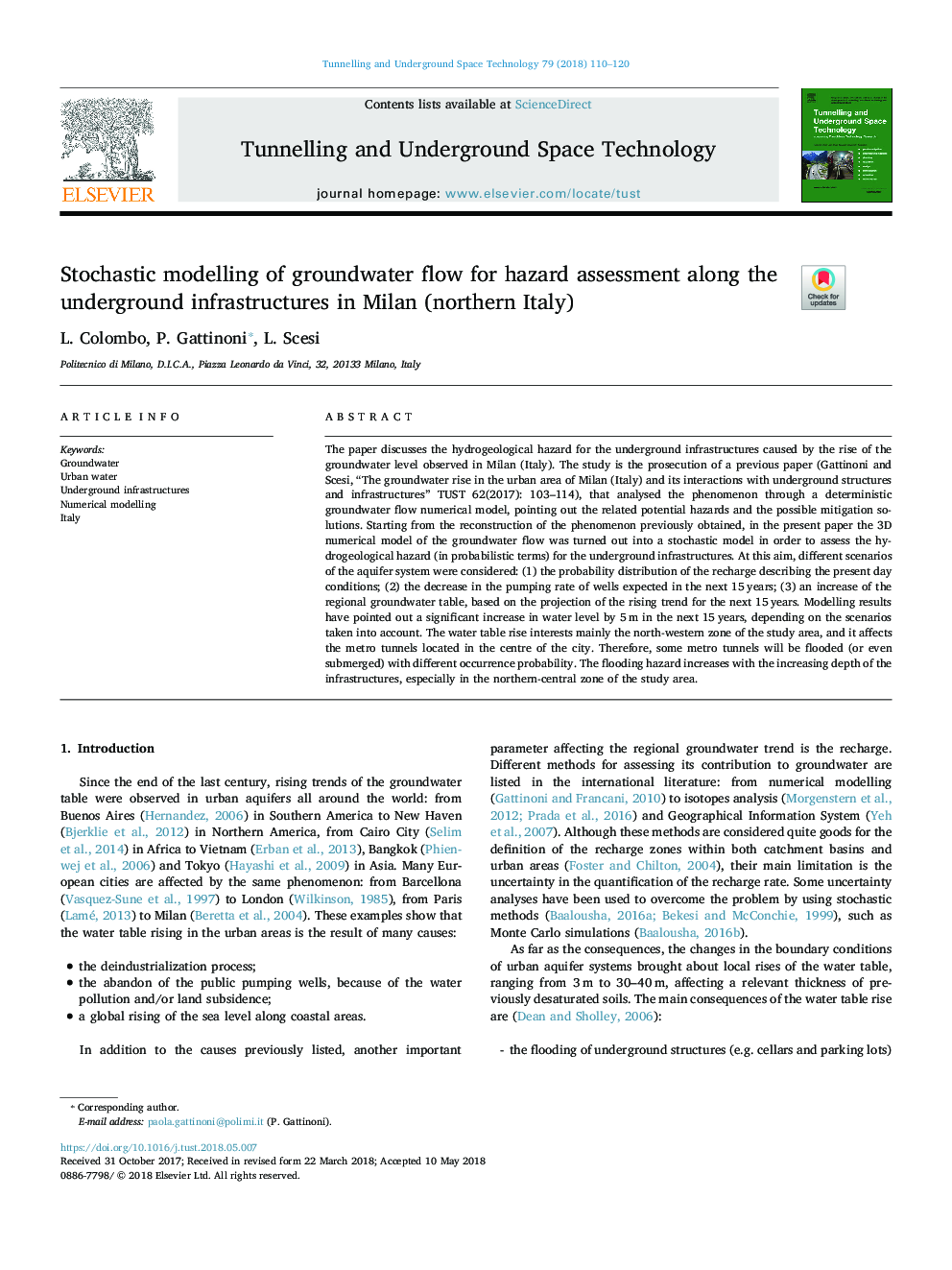| Article ID | Journal | Published Year | Pages | File Type |
|---|---|---|---|---|
| 6782224 | Tunnelling and Underground Space Technology | 2018 | 11 Pages |
Abstract
The paper discusses the hydrogeological hazard for the underground infrastructures caused by the rise of the groundwater level observed in Milan (Italy). The study is the prosecution of a previous paper (Gattinoni and Scesi, “The groundwater rise in the urban area of Milan (Italy) and its interactions with underground structures and infrastructures” TUST 62(2017): 103-114), that analysed the phenomenon through a deterministic groundwater flow numerical model, pointing out the related potential hazards and the possible mitigation solutions. Starting from the reconstruction of the phenomenon previously obtained, in the present paper the 3D numerical model of the groundwater flow was turned out into a stochastic model in order to assess the hydrogeological hazard (in probabilistic terms) for the underground infrastructures. At this aim, different scenarios of the aquifer system were considered: (1) the probability distribution of the recharge describing the present day conditions; (2) the decrease in the pumping rate of wells expected in the next 15â¯years; (3) an increase of the regional groundwater table, based on the projection of the rising trend for the next 15â¯years. Modelling results have pointed out a significant increase in water level by 5â¯m in the next 15â¯years, depending on the scenarios taken into account. The water table rise interests mainly the north-western zone of the study area, and it affects the metro tunnels located in the centre of the city. Therefore, some metro tunnels will be flooded (or even submerged) with different occurrence probability. The flooding hazard increases with the increasing depth of the infrastructures, especially in the northern-central zone of the study area.
Related Topics
Physical Sciences and Engineering
Earth and Planetary Sciences
Geotechnical Engineering and Engineering Geology
Authors
L. Colombo, P. Gattinoni, L. Scesi,
